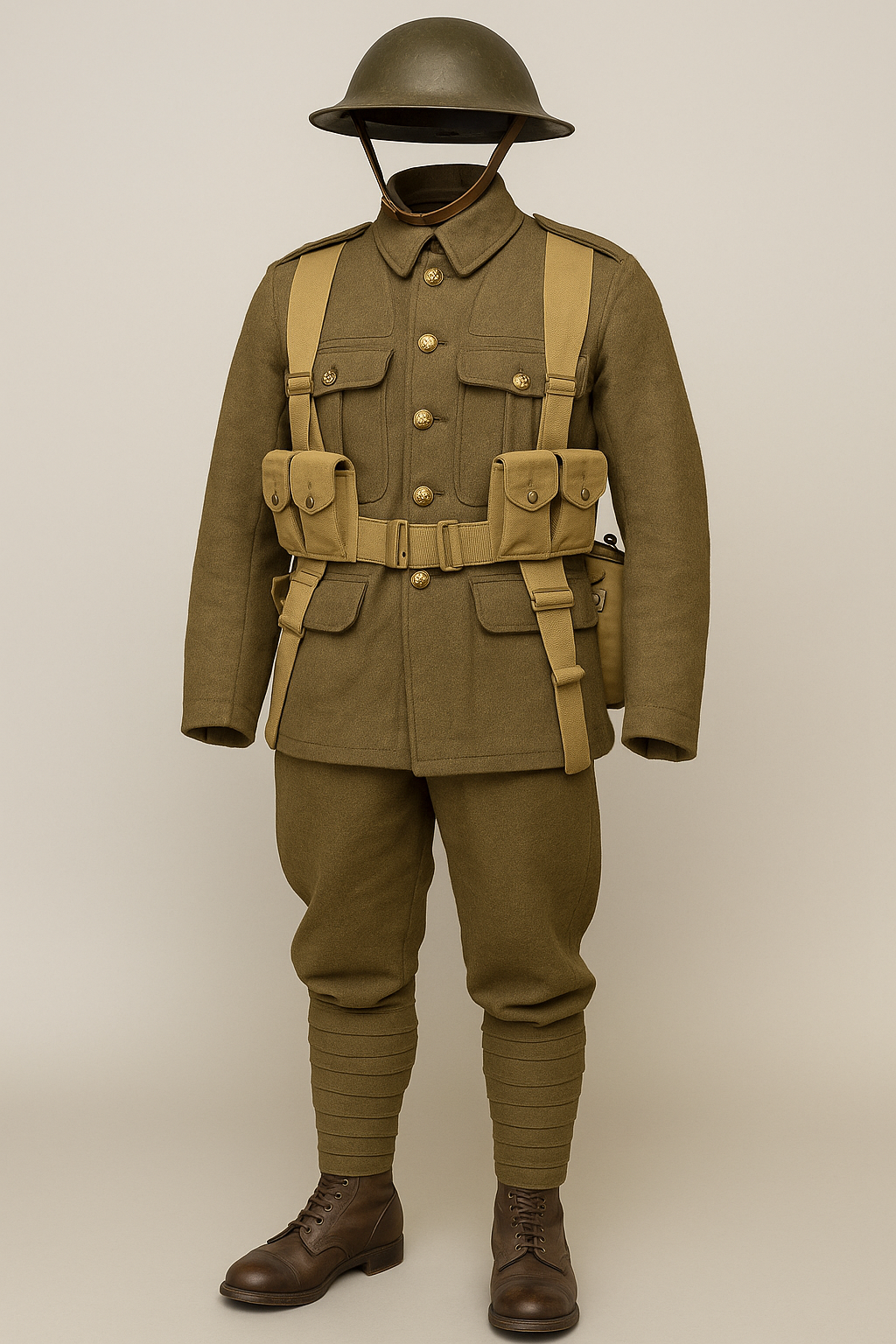
Inside the WW1 British Soldier Uniform: History, Details & Collector Tips
Published on Sep 22, 2025
Introduction: Did You Know the British Army Issued Over 5 Million Uniforms During WW1?
That’s right—over 5 million! The WW1 British uniform isn't just fabric; it’s stitched with the legacy of one of history's most devastating conflicts. Whether you’re a history buff, reenactor, or collector, understanding the British soldier uniform WW1 is essential to appreciating its role in shaping military attire for decades to come.
But getting it right—whether for display or wear—is more than just buying olive-drab cloth. It requires knowing what to look for, where to find it, and how to avoid common pitfalls. This guide walks you through the essentials of the WW1 British uniform, from headgear to WW2 trousers, often mistaken for their earlier counterparts.
The Backbone of the British WW1 Uniform: Key Components Explained
Understanding the British WW1 uniform starts with knowing each item’s role, fit, and function. Here’s a breakdown of the essentials:
1. Service Dress Tunic (1902 Pattern)
- Wool serge material
- Stand-and-fall collar
- Five brass general service buttons
- Pleated breast pockets
Action Tip: If you're collecting or reenacting, ensure the tunic has the correct brass buttons and stitching detail. Avoid tunics with modern zippers or Velcro—dead giveaways of inauthenticity.
2. Trousers (Often Confused with WW2 Trousers)
- Made of the same wool serge as the tunic
- Narrower than WW2 trousers, with a high waist and brace buttons
- Often bloused into puttees
Common Pitfall: Many collectors accidentally buy WW2 trousers thinking they're the same. Look for the higher waist and lack of rear pockets to distinguish WW1 versions.
3. Puttees
- Long woollen strips wrapped around the lower legs
- Provided ankle support and kept dirt out of boots
4. Boots (Ammunition Boots)
- Hobnailed leather soles
- Eyelet lacing (no hooks)
Action Tip: Reproduction boots should have authentic hobnails for accurate sound and grip. Some reenactors even add vintage soles for extra realism.
5. Headgear: The Iconic Brodie Helmet
- Introduced in 1916
- Steel construction with a leather liner
- Often misidentified with US models—look for the British chinstrap system
6. Webbing and Equipment
- 1908 Pattern Webbing System
- Included ammunition pouches, haversack, water bottle, and entrenching tool
Bonus: Original webbing sets are rare but not impossible to find. Reproductions are widely available and highly accurate.
How to Start Your WW1 British Uniform Collection the Right Way
Set a Clear Goal
Are you:
- A collector focused on historical accuracy?
- A reenactor needing durability and comfort?
- A museum curator or teacher?
Tip: Your purpose will guide your purchase decisions. Reenactors may sacrifice some authenticity for comfort, whereas collectors prioritiseprioritizeprioritizeprioritizeprioritizeprioritize historical detail.
Where to Buy: Reputable Sources Only
- Reproduction Suppliers: What Price Glory, Soldier of Fortune, Hikishop (for budget options)
- Original GearGearGearGearGearGear: eBay, Militaria fairs, private collectors
Watch Out: Always ask for provenance or clear photos. Many sellers mislabel British WW1 uniforms as WW2 gear.
Inspect Before You Invest
Checklist for authenticity:
- Material (100% wool serge)
- Stitching and button types
- Label stamps (date and unit info)
- Fit—modern sizes differ
Common Pitfalls When Building a WW1 British Uniform
Even seasoned collectors make mistakes. Here are common missteps to avoid:
1. Mixing Eras
- Combining WW2 trousers with WW1 tunics
- Using plastic buttons or incorrect insignia
2. Ignoring Rank or Regiment Details
- Not all soldiers wore the same insignia or cap badge
- Details vary between the infantry, the artillery, and the medical corps
Action Step: Use wartime photos and unit records to match details correctly.
3. Buying Cheap Reproductions
- Low-cost reproductions often use incorrect materials and modern cuts
- Inaccurate GearGearGearGearGearGear lowers the educational and resale value
Modern Trends in British WW1 Uniform Reenactment and Collecting
1. High-Accuracy Reenactment
- Groups now emphasizeemphasizeemphasizeemphasizeemphasize first-person impressions
- Period-correct food, language, and gear setups
2. 3D-Printed Components
- Some collectors 3D print rare uniform parts (e.g., chinstrap buckles, brass insignia)
- Good for hard-to-find parts, but be transparent in displays
3. Hybrid Uniform Displays
- Combining original and reproduction GearGearGearGearGearGear
- Example: Original tunic with repro trousers and webbing to preserve historical fabric
Preservation Tips for British WW1 Uniforms
If you’re lucky enough to own originals:
- Avoid sunlight: UV light destroys wool fibres
- Store flat: Hanging can distort the shape
- Use acid-free tissue: Keeps fabric dry and breathable
- Document your collection: Provenance adds immense value
WW1 British Uniform vs. WW2 Uniform: Spot the Differences
While many pieces look similar, key distinctions include:
Tunic Buttons Brass general service Plastic or economy metal
Trousers: Higher waist, no rear pockets. Lower waist, rear pockets are common
Headgear : Brodie helmet with leather liner , MkII helmet with rubber/metal liners
Webbing 1908 Pattern 1937 Pattern
Quick Test: If the trousers have belt loops—they’re likely WW2, not WW1!
Final Thoughts: Why the WW1 British Uniform Still Captivates Enthusiasts Today
The WW1 British uniform is more than just historical attire—it represents bravery, evolution in warfare, and the human side of global conflict. Whether you're just starting your collection or refining your reenactment gear, knowing the details helps you honour that legacy correctly.
